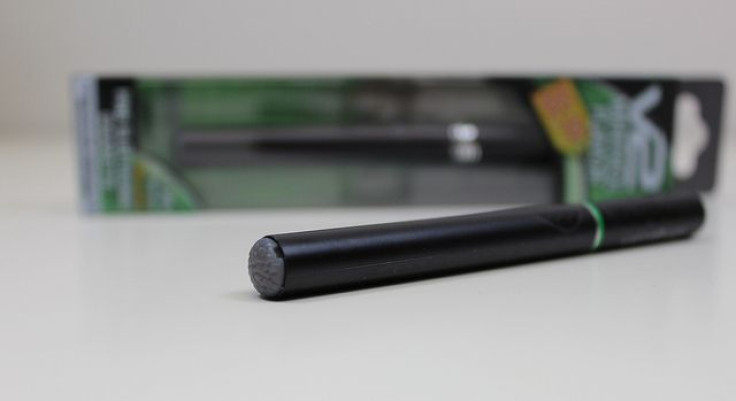E-Cigarettes Are Poisoning Kids, As More Than Half Of All Control Center Calls Involve Children Under 5

It’s not just adults who feel the harmful effects of smoking liquid nicotine. Now a new report from the Centers for Disease Control and Prevention shows kids under the age of 5 represent more than half of all calls to poison centers around the country due to improperly handling e-cigarettes.
E-cigarettes have experienced a tumultuous, if short, life span. Originally they were billed as the new cigarette. Then they became cessation products. Mixed into that was a stirring fear that they’d actually lead to traditional cigarette use, as sort of a gateway drug. Now the CDC has announced in its latest findings an altogether different kind of concern, and it has nothing to do with e-cigs as alternatives to regular cigarettes.
Calls to poison control centers involving e-cigarette liquids that contain nicotine jumped from one call per month in September 2010 to 215 calls per month in February 2014. This is perhaps a modest gain in the larger context of e-cigarettes’ growing popularity — the ratio of e-cigs to poisonings may in fact be lower, but that data isn’t available. What the CDC does know is an alarming number of those cases involved kids using the products.
“This report raises another red flag about e-cigarettes — the liquid nicotine used in e-cigarettes can be hazardous,” said CDC Director Dr. Tom Frieden in a statement. Because the e-cigs aren’t required to be childproof, and often come in appealing flavors like candy and fruit, curious kids see no harm in using them. Traditional cigarette poisoning rates did not show a similar increase over the time period.
Adults who consume nicotine on a daily basis have the drug flooding their system regularly, so they show no adverse reactions. But kids whose brains haven’t adapted to it and still see the drug as toxic may end up vomiting and feeling nauseous, with possible eye irritation. “We sometimes forget that nicotine itself is a poison,” Ashley Webb, director of the Kentucky Regional Poison Control Center in Louisville, told The Washington Post. “It’s such a highly concentrated substance that it’s more likely to cause symptoms at a lower dose.” Webb says the number of calls in 2014 for e-cigarette-related poisonings at her center is already approaching those for all of 2013.
Kids typically succumb to nicotine poisoning via e-cigarettes in three ways. Where poisoning related to traditional cigarettes usually involves them eating the product, e-cigs contain liquid nicotine, which kids can ingest, inhale, or absorb through their skin or eyes. The CDC suspects the total number of exposures is actually higher than what was reported, because not all cases end in a phone call.
Of course, e-cigarette calls only make up little more than an eighth of the total calls from cigarette exposure — 2,405 calls compared to 16,248 calls over the study period. According to Frieden, the critical factor is rate of change. “Use of these products is skyrocketing,” he said, “and these poisonings will continue.”
Other experts liken the poisonings to those caused by ordinary household cleaning products, which, together with family medicine, account for a far larger portion of overall poisonings in the U.S. In 2011, half of the two million calls to poison control centers were for exposures and ingestions in kids under 5, with the majority of non-medication exposure calls involving cosmetics and personal care products.
At least for now, this data comforts some experts, as e-cigarettes still make up a tiny fraction of the overall pool. “Having a knee-jerk reaction at something without looking at the data carefully is disturbing,” Cynthia Cabrera, executive director of the Smoke-Free Alternatives Trade Association, told The Washington Post. Cabrera said her organization supports the need for better labeling and more secure packaging. Still, parents may be more to blame than the cigarettes themselves, she added. “We need to not take things out of context.”



























